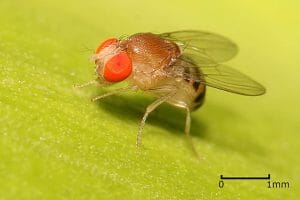Vivisection Definition
Vivisection is the use of live animals in scientific experiments. The term comes from the Latin word vivus which means alive and the English word section meaning to cut. This method of study was common practice for centuries as a way for scientists to learn about the physiology of animals, and to use that information to understand structure and function in the human body.
History of Vivisection
The earliest records of vivisection come from the Romans and date from around 500 BCE. The early Greeks considered animals a less important form of life, which justified experimenting on them. The 17th century French scientist and mathematician René Descartes was famous for his experimental work on animals. He claimed that vivisection was not morally wrong because animals did not have souls and, therefore, could not think or feel pain. Doctors and other researchers regularly used goats, cows and sheep in experimental studies at the beginning of the 19th century. Some famous scientists of the era who used animals in their experiments were Louis Pasteur, Ivan Pavlov and Claude Bernard.
By the mid-20th century, the use of experimental animals grew in frequency and in the number of species used. Dogs, cats, mice, rats and monkeys were used, not only for medical and biological research, but also for the training of veterinarians and doctors. It was also at this time that animals started being used to help develop new drugs (penicillin) and vaccines (polio vaccine) and to test the safety of cosmetic products. The antivivisection movement, more commonly called the animal rights movement, began in the late 20th century and gained momentum in the mid-1970s. Recently, a 30-year effort led by the Physicians Committee for Responsible Medicine resulted in the end of animals being used in medical school training in the United States and Canada.
Alternatives to Vivisection
There are three strategies used as alternatives to animal testing. They are known as the 3Rs: reduce, refine and replace. Alternative test methods reduce the number of animals used for testing, while still fulfilling the requirements of a study. A test method can be refined so that it improves the well-being of the animal during the study, or reduces pain and distress. Finally, computer models or in vitro methods, such as cell culture and tissue culture, can replace higher animals (like mammals and vertebrates) in experimental studies. Alternative organisms such as bacteria, fungi and fruit flies are substituted for higher animals in genetics, molecular biology, neurology, and metabolism studies.

The image above shows the fruit fly Drosophila melanogaster, used as an alternative organism in genetics and neurology research.
Quiz
1. Which of the following invertebrates are used in place of other animals in experiments?
A. Fruit flies
B. Fungi
C. Bacteria
D. All of the above.
2. Vivisection is ________________________.
A. a species of fruit fly.
B. the last name of a French scientist.
C. the use of live animals in scientific experiments.
D. an antibiotic discovered during animal experiments.
References
- Alternatives to animal testing. (2017, May 11). Retrieved from https://www.niehs.nih.gov/health/topics/science/sya-iccvam/.
- Barnard, N. (2017, May 11). Dear Physicians Committee supporter, [open letter]. Retrieved from https://www.pcrm.org/med_school_victory.
- Doke, S. & Dhawale, S. (2015). Alternatives to animal testing: A review. Saudi Pharmaceutical Journal. 23(3), 223-229.
- René Descartes. (n.d.). In Encyclopedia Britannica online. Retrieved from https://www.britannica.com/biography/Rene-Descartes#toc43355.
- Vivisection. (n.d.). In Encyclopedia Britannica online. Retrieved from https://www.britannica.com/science/vivisection.
- “Vivisection.” (2017, May 11). Retrieved from http://www.scienceclarified.com/Vi-Z/Vivisection.html.
Vivisection
No comments:
Post a Comment